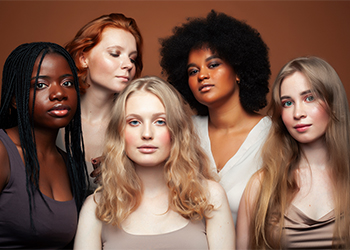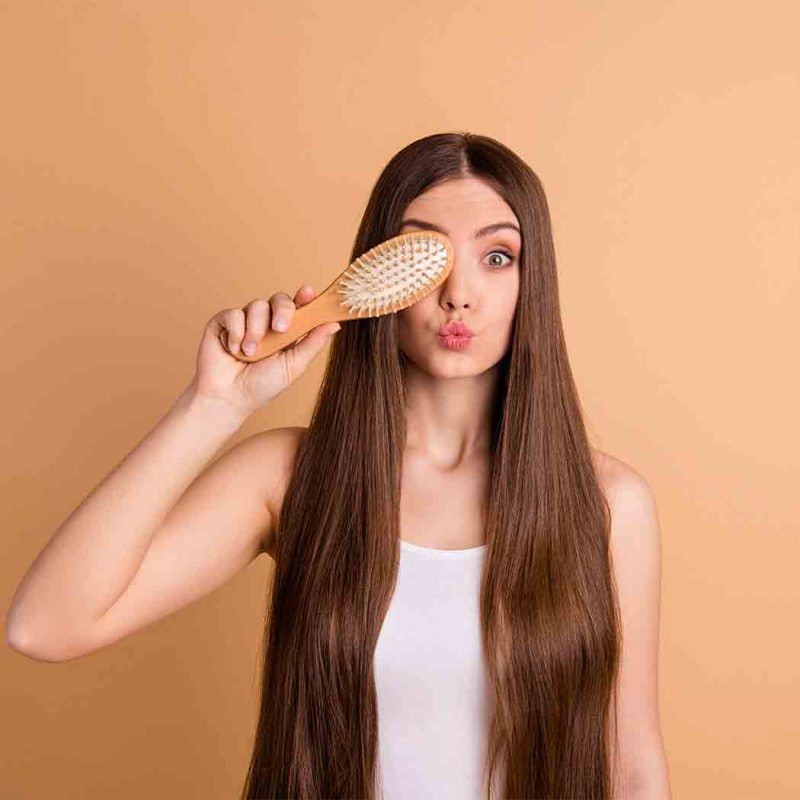Our hair can be the showstopper of every look that we style, but it can also let us down sometimes. We’ve all been there, fighting to make our hair cooperate to no avail. But this is often because there is no ‘one-size-fits-all’ when it comes to hair. We all have different hair, and the types largely determine how they should be treated and what products or hairstyles work best for them.
If you are on the journey to understand your hair better and give them what they need, you need to determine your hair type and find the correct regimen for it.
The Science Behind Hair Type
The types of hair are determined by looking at your curl pattern, including the number of curls and how tightly bound they are on your head. These curls depend on the different shapes and sizes that your hair follicles take—the more oval or asymmetrical the follicles, the curlier your hair pattern.
The hair type or the shape of follicles you inherit depends on your genes. This means that each time your strands go through the growth cycle phases, they will have a specific pattern that they always follow. These different kinds of hair can alter due to medication and hormones or prolonged use of chemicals or heat.
However, you must remember that the shape of your follicles is unique, and even if someone has the same hair type as you, it’s not always true that their hair will behave in the same way as yours.
The Basic Types of Hair
Now that we know the science behind them let’s get familiar with the different kinds of hair. All hairstyles are unique. In fact, your hair may be a mix of two different types as well. So, classifying hair can be pretty complicated, but celebrity stylist Andre Walker’s differentiation is considered a general order for everyone. He classifies the hair into four types based on the curl pattern and A, B, or C, depending on the diameter of the wave, curl or coil. Here’s a basic breakdown of all the types of hair:
Type 1: Straight Hair
-
1A: Flattest, silkiest and thinnest of all hair types
-
1B: Straight but coarser hair strands with some bends
-
1C: Thick, coarse (mostly frizzy) yet straight hair
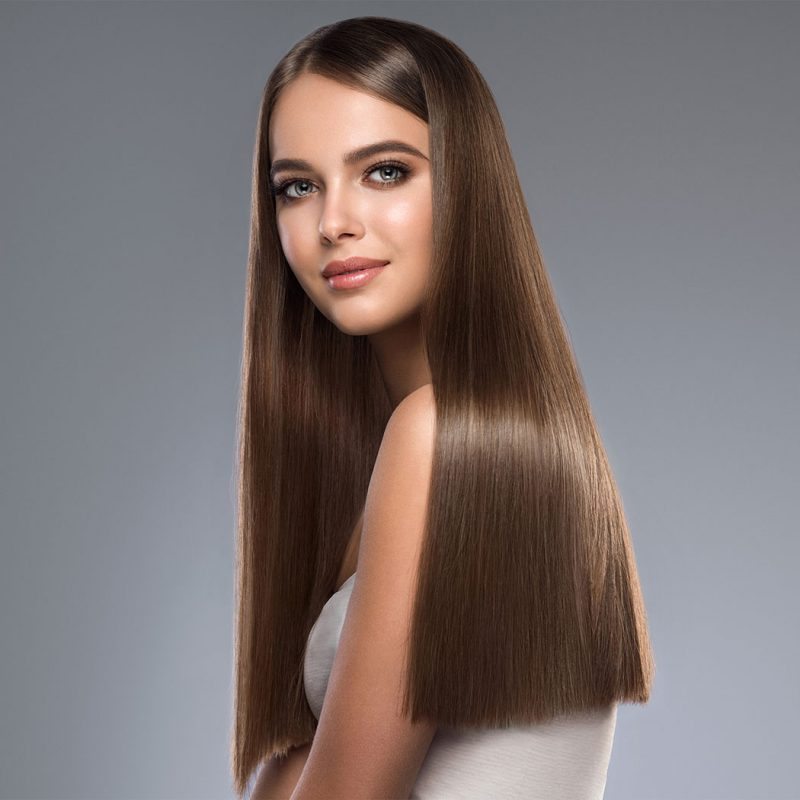
Type 2: Wavy Hair
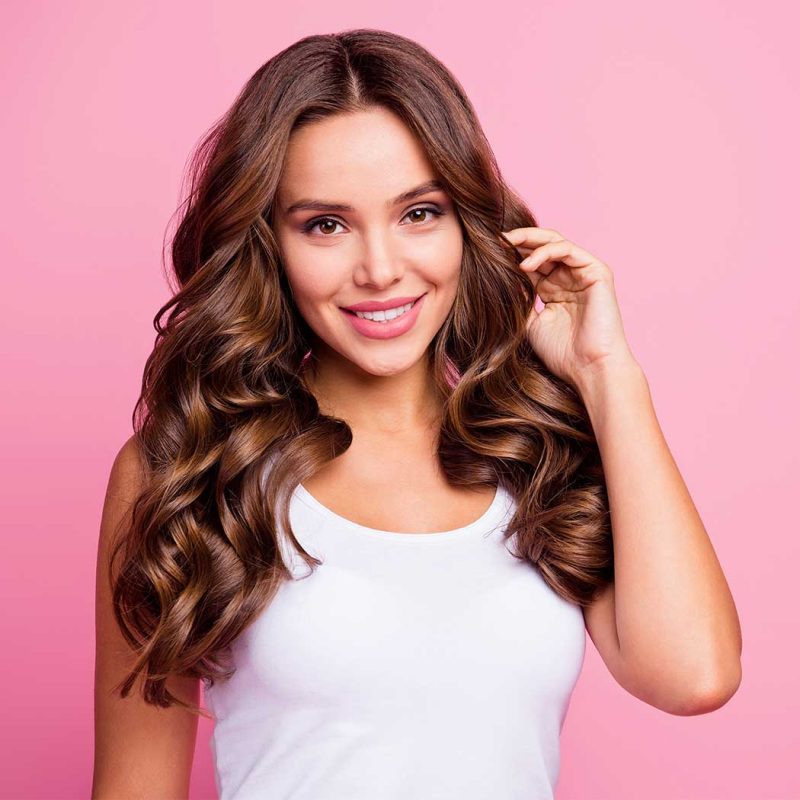
-
2A: Loose loops that are flatter near the scalp and form an S-shaped wave towards the base
-
2B: Straight roots but a defined S-shaped pattern as you move to the base
-
2C: Coarse waves that start from the roots and are more defined
Type 3: Curly Hair
-
3A: Thick, loose curls with a well-defined shape, and circumference of a sidewalk chalk
-
3B: Coarse and dense ringlets, with the circumference of a sharpie
-
3C: Tightly packed corkscrew curls with the most volume, with the circumference of a pencil or straw
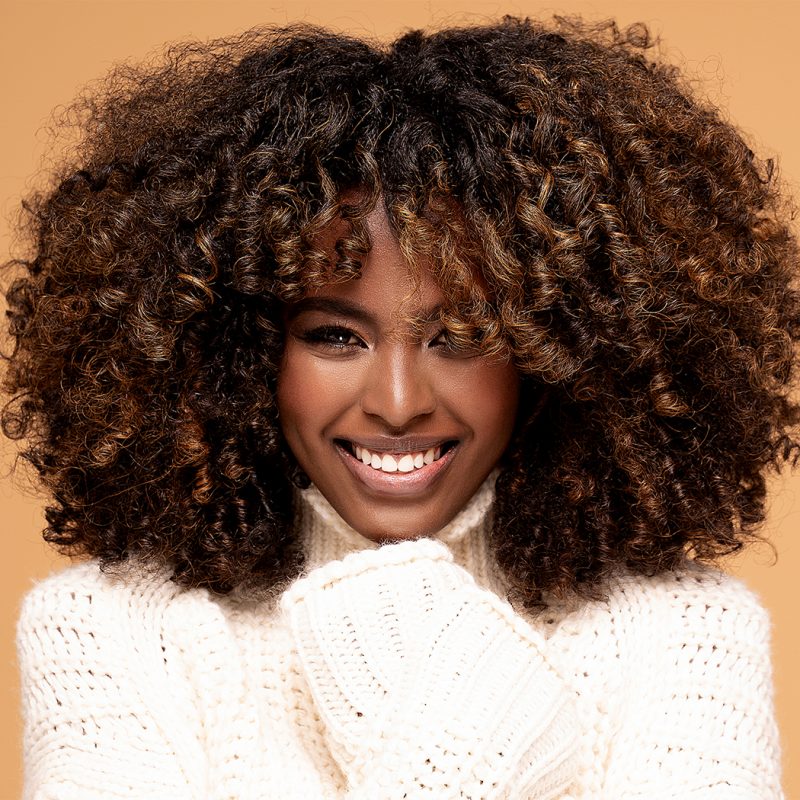
Type 4: Coily Hair
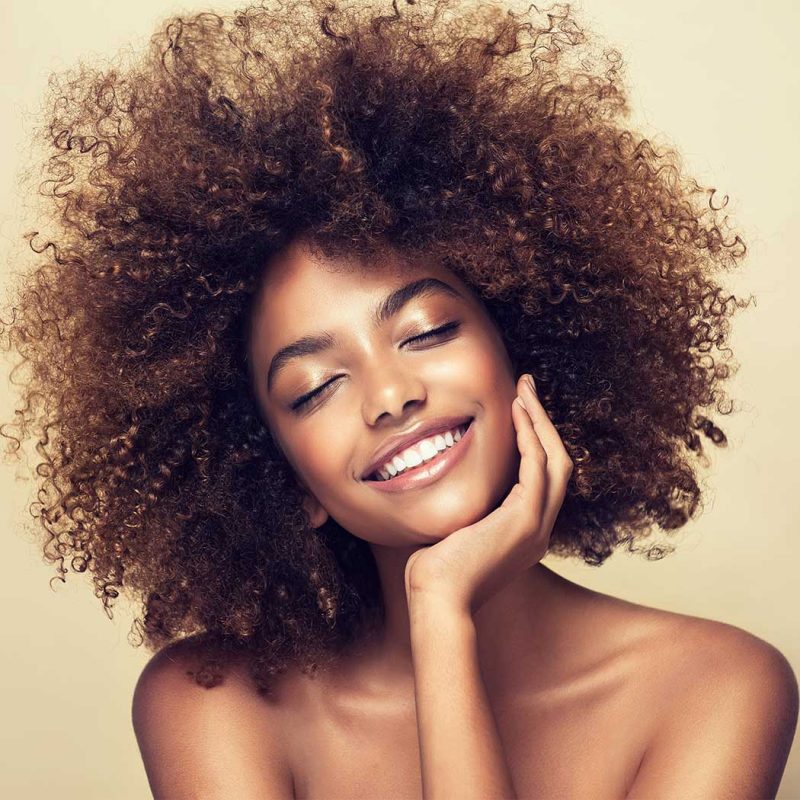
-
4A: Tightly coiled, wiry or fine curls. Circumference of a crochet needle
-
4B: Coils take a Z-shape, and the curls are less defined and tighter
-
4C: Z-shaped and less defined than 4B. It experiences the most amount of shrinkage
How to Style Different Hair Types
Type 1: Straight Hair
Type 1 or straight hair is characteristically devoid of any natural curls or waves. They can be thin and wispy or thick and coarse, depending on whether they’re type 1A, 1B, or 1C. What’s common in these hair typesis that they’re all shinier and often greasy because the sebum produced by the scalp easily slips through your hair. Almost all type 1 hair have enough moisture to keep them healthy, so the most common issue is not dry but greasy hair.
Since your scalp produces enough sebum, you need to ensure that you don’t buy products that contain oil, as this can over moisturise your hair. Avoiding heavy creams, serums, or butter may also be your best bet for healthy, balanced hair. Since this hair type can get greasy fast, people often over shampoo to get rid of the oiliness. This is the biggest mistake as over-shampooing only activates sebum production and adds to the cycle of greasiness. In this case, dry shampoo is your best friend.
When it comes to the different hair types within straight hair, 1A is the wispy lot with virtually no texture. If you are looking to add some volume to your hair and change it up a bit, try a texturising spray. Most straight but damaged hair (due to chemical treatments) that fall under 1C also require a bit of TLC. For this, apply hair masksonce in a while, but make sure not to overdo them and stick to the lightweight oils and products.
If you’re looking for a haircut, stylists suggest that cutting your hair keeping the face shape in mind can achieve the best results. This is because these types of hair generally frame your face as they’re thin and have no volume. You can try going for layers to add some texture and break the monotony.
Type 2: Wavy Hair
Wavy hair can be a little more challenging to peg than its counterparts. This hair type is neither straight nor curly. This means there is so much more you can do with your hair, but it’s also a curse because you have to deal with problems that plague both styles. If you’re closer to 2A, you are no stranger to greasy hair, but if you’re more of a 2C, you know how difficult frizz is to control. Either way, you need to take care of both the aspects and not overdue on any one.
To maintain that balance, you can’t lean heavily on oil-based products on creams as they may flatten your waves and give you a greasy look. Instead, use a light mousse or lightweight gel to define your curls and lift your hair. You can also use sea salt spray on these types of hair to create a beachy look. When your hair is wet, you can also use a diffuser, especially if it leans towards the frizzy side.
When you visit the salon and fancy a dash of colour, make sure that you ask for a balayage as this kind of look works the best with Type 2 hair.
Type 3: Curly Hair
If you have Type 3 curls, you might be confused about defining them into one classification. This classification has the most varied and different hair types, with many manes crossing between Type 2 and Type 3. Whether you have loose curls of 3A or corkscrews of 3C, you are well-versed with frizziness and dry hair. Due to this, using heavy curl creams and enhancing mousse, which set your hair, is the most important for this type.
These types of hair, especially if you are a 3A, are most reactive to the elements (wind, humidity, etc.) and keeping them protected while adapting to the weather is essential.
Ensure that you deep condition your hair once a week (especially if you have 3C hair) and use a sulphate-free shampoo to prevent breakage. Before you shower, apply a moisturising oil such as the Parachute Advansed Hair Oil so that your hair doesn’t break when it’s wet (and at its most vulnerable). You might want to invest in a cleansing shampooonce in a while to clean your scalp. Avoid combing your hair when it’s dry, but if you have to, then use a wide-tooth comb to detangle it from the ends to the roots. Tying a loose ponytail might also be wise as these types of hair can pull back and eventually lose definition.
To style, you can rely on a good leave-in conditioner and curl cream or gel. Once you apply these, you can simply use a diffuser to dry and prevent frizz or clump and twist strands to encourage curls. Styling milk or anti-humectant (humidity blocking) styling creams work best with 3C curls. For 3C curls, you can also invest in a Perm rod or Flexi rod set for definition and use a protein-rich conditioner as this different hair type is most prone to breakage.
Type 4: Coily Hair
Type 4 hair is the kinky, coily kind and different from the curly hair type. They form a Z-shape rather than an S-shape, and their angles and ends make them more prone to breakage, knots and dryness. Dryness is one of the biggest problems faced by Type 4 coils. This means that most of the products you focus on are moisturisers and rich in hydrating ingredients.
Use a lot of leave-in conditioners after washing your hair and apply shea butter or coconut oil before shampooing to help pack in the natural sebum. You can combine the hydrating properties of coconut oil and shea oil with the Parachute Advansed Shea and Coconut Hair Oil. You should also make it a habit to sleep with a bonnet or silk scarf and apply light oil to your hair, especially if you’re closer to 4C. This will prevent any breakage since your hair is extremely delicate, and it will add that extra moisture that is crucial.
You can also try the co-washing technique where you only use a conditioner so that shampoo doesn’t dry out your hair. Your go-to products should be curl gels for styling and elongating gels so that the shrinkage is reduced in these types of hair.
Watch Out for Porosity and Density
Porosity
Porosity is the ability of your hair to soak in moisture. If your hair type is porous, it means that the cuticle is covered with holes. These holes absorb moisture, be it from products or external humidity. While high porosity means frizzy hair, it also means that you can pack the pores with moisturising products easily.
These products create a seal that doesn’t allow any frizziness to settle in your hair and work best when used with a blow dryer. This is because the heat from the blow dryer opens up the pores, allowing the product to seep in. If you use this method to reduce frizziness, ensure that you clarify these pores with a cleansing shampoo so that there is no buildup of product on your scalp.
To know if your hair has a high porosity, simply pick a couple of strands and soak them in water. After a few minutes, if the hair is floating, it means that it’s less porous, but if it has sunken, it means that it’s more absorbent.
Density
Hair density is the amount of hair on your head. The density of your hair is affected by the different hair types. It can also get affected by factors such as hormonal changes, products that you use and stress. If you believe that there has been a change in your hair density, especially if your hair has started thinning, you might want to consider the products that you use. These products can weigh down your hair and pull them, making them less dense.
You can check the density by simply seeing if you can see your scalp without parting your hair. If you can’t, it is because you have dense hair. If you can, your hair is thinner and probably needs volume or texturising sprays.
Using Parachute Advansed Hair Oil for Hair Maintenance
Due to its versatile nature, Parachute Advansed Hair Oil can be beneficial to all hair types. You can use the hair oil as hot oil treatment or apply it lightly daily. You can choose from our wide range of products, depending on what suits your hair type – be it the Parachute Advansed Shea & Coconut Hair Oil for Type 3 and 4 or a lightweight Argan and Coconut Hair Oil for Type 1 and 2.
Frequently Added Questions
What is the Rarest Hair Type?
The rarest hair type is Type 1A, which is an extremely straight kind of hair.
What is the Second Rarest Hair Colour?
While we see different types of black hair everywhere, red is the rarest of them all. If not for the different types of black hair or reds, blonde hair is the second rarest.
Conclusion
It is essential to know your hair type to create a hair care routine that suits them. Being in the dark can only pose a danger to your hair as you continue to use products that may be harmful to them. So, once you know the hair type, start taking better care of your tresses and nurture them to their healthy self. You must remember that though you can define your hair with the types, all locks are unique, and in the end, you must listen to yours.



